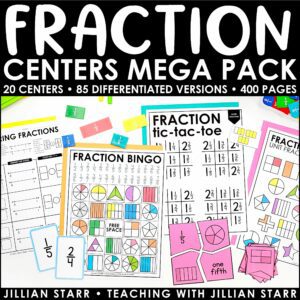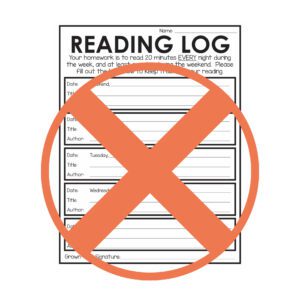
Phonological awareness is a crucial skill in developing strong reading and writing skills! While many teachers have heard of phonological awareness, and understand its significance, there are often lots of questions. So, what is phonological awareness, and what does it look like (or sound like)?
Phonological awareness is an umbrella term that follows a typical progression of skill development:
- Word Awareness
- Responsive to Rhyme
- Syllable Awareness
- Onset-Rime Manipulation
- Phonemic Awareness
Essentially, phonological awareness refers to the ability to recognize and manipulate the spoken parts of sentences and words. Let’s define some of the key skills involved in phonological awareness and explore what they look like with our students.

Phonological Awareness is Word Awareness
You might be thinking, don’t our students come to us with word awareness? After all, they use words all of the time in their verbal communication. Just because they use words doesn’t mean students automatically understand where words begin and end.
Word awareness involves recognizing the number of words that make up a spoken sentence and tracking those words within the sentence. Word awareness requires less direct instruction time, it is an important first step in learning to break language up into smaller parts.
Phonological Awareness is Responsive to Rhyme
As students build their phonological awareness skills, they will begin to respond to rhyme. This is different than producing rhymes (which is a more advanced skill).
Here, students enjoy listening and repeating words that rhyme (or are alliterative) in books and nursery rhymes. This might look like repeating rhymes like repeating phrases like “Peter Piper Picked a Pack of Pickled Peppers,” or ” giggling when they hear different rhymes in “Down by the Bay.”
Students are not producing the rhymes (and alliterative phrases) in this stage of phonological awareness, but developing an ability to hear and repeat them.
Phonological Awareness is Syllable Awareness
We continue to build off of prior skills under the phonological awareness umbrella. Here we are moving from breaking up our language into words to breaking up words into syllables.
Syllable awareness includes:
- Clapping out syllables
- Counting syllables
- Blending syllables
- Segmenting words into syllables
When I think about this skill, my mind immediately goes to our ability to break words into smaller parts when spelling, as well as learning the six syllable types. All of that learning is predicated on our ability to hear syllables and clap them out.
Phonological Awareness is Onset-Rime Manipulation
The progression of phonological awareness now moves into onset and rime. In simplest terms, this is the ability to produce rhyming words. As I said before, this is a more advanced skill than recognizing rhymes.
Prior to producing rhymes, students have to be able to blend onsets and rimes. This means that they can blend SP-OT, L-UCK, CH-ART. Once we know students can blend onsets and rimes, they are ready to start producing rhymes on their own.
For this, students learn to isolate the rime AND manipulate the onset to produce a rhyming word. For example, if you ask a student “what rhymes with clock,” the student must isolate the rime, “ock,” and then manipulate the onset, “cl,” to create a new word like “dock” or “block.”
Phonological Awareness is Phonemic Awareness
Phonemic awareness is one of the biggest predictors of reading success, and is rightly a big focus of phonological awareness. Phonemic awareness is the ability to hear and manipulate individual sounds (phonemes) in spoken words. Phonemes are the smallest units of sounds, and there are 44 in the English language.
It’s important not to confuse phonemes with letters. There are 26 letters in the English alphabet, but some of those letters make multiple sounds or work in combination with other letters to make new sounds. Phonological awareness focuses on sounds only (we’ll talk about introducing letter-sound relationships at the end).
Phonemic awareness falls under the umbrella of Phonological Awareness. However, phonemic awareness is its own mini-umbrella, that encompasses several smaller skills related to how we hear and manipulate phonemes. Let’s take a closer look:
Phoneme Isolation
Phoneme isolation is where students are able to hear and isolate a single sound within a word. This can be at the beginning, middle, or end of a word (often referred to as initial, medial, and final sounds).
For example, when isolating the phonemes in the word “chat,” we find three distinct sounds. The initial sound is /ch/, the medial vowel is /ă/, and the final sound is /t/. When practicing phoneme isolation with students, we might ask, “what is the last sound you hear in the word CHAT?”
It’s important to note that we are not asking students to identify all three sounds in “chat” at once (check out segmenting phonemes for this). We are more focused on isolating initial, medial, or final sounds at this stage.
Phoneme Blending
Blending can take place at multiple levels within phonological awareness. We can:
- blend words (snow + man)
- blend syllables (play + ing)
- blend onset and times (pl + ay)
- blend phonemes (/ch/ + /ă/ + /t/)
When we are specifically focused on phoneme blending, we are providing students with the individual phonemes and asking them to blend those phonemes together into a word. When practicing blending phonemes with students, I might say the individual sounds /ch/, /ă/, and /t/, and ask students to string them together into a whole word.
Phoneme Segmenting
With phoneme segmenting, we are building off our work with phoneme isolation. Here we are asking students to hear the whole word and segment it into each individual sound they hear.
Segmenting is a skill that directly correlates to encoding or spelling. Students hear a whole word and they segment the word into all the individual sounds they hear. During instruction, a teacher would say a whole word and students segment the word into individual phonemes.
For example, when isolating the phonemes in the word “chat,” we find three distinct sounds. The initial sound is /ch/, the medial vowel is /ă/, and the final sound is /t/. We are not yet asking students to isolate EACH sound (check out segmenting phonemes for that), but we are might say “what sound do you hear at the begging of “chat?”
Phoneme Manipulation
Phoneme manipulation can be separated into three separate skills:
- Phoneme Addition
- Phoneme Substitution
- Phoneme Deletion
Phoneme addition is where we ask students to add a phoneme to an existing set of phonemes. This could look like adding /s/ to the beginning of “pot” to create the word “spot.”
Phoneme substitution is where we ask students to replace one phoneme in an existing set of phonemes with another. For example, we can substitute the initial sound, /ch/ in “chat” with /p/ and get “pat.” We can also substitute medial vowels like substituting the /ă/ in “lap” with /ĭ/, giving us “lip.” When working with students I would ask, “Change the /ch/ in CHAT to /p/.”
Phoneme deletion is where we ask students to remove a phoneme from an existing set of phonemes. This could look like removing the initial sound, /w/, from the word “win,” giving us “in.” When working with students I would ask, “Say WIN. Now say it again without the /w/.”
Wait! What about Phonics?
Phonics is actually a method of teaching that focuses on the relationship between letters and sounds. In simplest terms, phonological awareness skills pertain only to sounds. When print is introduced, we are now discussing phonics. Therefore, phonics does not fall under the umbrella of phonological awareness skills, but it certainly builds upon them!
If you’re curious about the detailed progression of these skills, or at what age we might expect students to have achieved them, check out this article from Reading Rockets.
I hope this post has helped clarify phonological awareness and the multiple skills that work together to build our phonological awareness. If you found this post helpful, I’d love to hear from you in the comments.
If you’re looking for more posts focused on the Science of Reading, CLICK HERE to start browsing! Some favorites include:











So clear and concise as always, Jillian! Love the visual of the 5 components. This is super helpful.
Thank you so much for your kind words, Meghan! I will keep trying to create content that supports you and the other teachers in this little corner of the internet.
Warmly,
Jillian